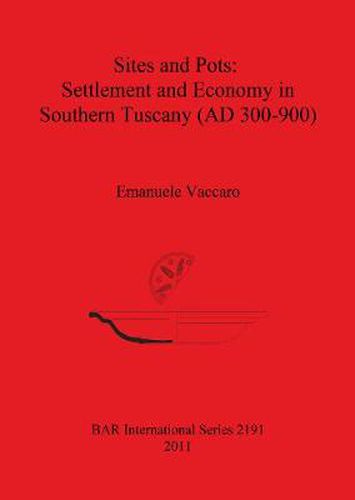Readings Newsletter
Become a Readings Member to make your shopping experience even easier.
Sign in or sign up for free!
You’re not far away from qualifying for FREE standard shipping within Australia
You’ve qualified for FREE standard shipping within Australia
The cart is loading…






This title is printed to order. This book may have been self-published. If so, we cannot guarantee the quality of the content. In the main most books will have gone through the editing process however some may not. We therefore suggest that you be aware of this before ordering this book. If in doubt check either the author or publisher’s details as we are unable to accept any returns unless they are faulty. Please contact us if you have any questions.
The research presented in this volume derives from the combination of two different projects. The first was undertaken on commission by the Department of Archaeology and the History of Art of the University of Siena whilst the second was run directly by the Faculty of Medieval Archaeology of the same university. In the summer of 2003, SPEA Autostrade a company operating in the motorway infrastructure development sector engaged a team of researchers from the University of Siena and the Archaeological cooperative ASTRA to evaluate the archaeological impact of a project to build the so-called ‘braccio tirrenico’ between Rosignano Marittimo (province of Livorno) and Civitavecchia (province of Viterbo), intended to complete the A12 motorway along Italy’s Tyrrhenian coast. The team of archaeologists from Siena was given the task of studying the proposed routes between Pescia Romana and Rosignano, whilst those from the ASTRA cooperative undertook a similar study in Lazio. The long stretch between the Tuscany-Lazio border and Rosignano Marittimo was subdivided into different segments, each of which was then assigned to a single team. One of the areas at greatest archaeological risk from the construction of this new motorway was the stretch between Talamone and Grosseto where very little archaeological research had previously been undertaken.
$9.00 standard shipping within Australia
FREE standard shipping within Australia for orders over $100.00
Express & International shipping calculated at checkout
This title is printed to order. This book may have been self-published. If so, we cannot guarantee the quality of the content. In the main most books will have gone through the editing process however some may not. We therefore suggest that you be aware of this before ordering this book. If in doubt check either the author or publisher’s details as we are unable to accept any returns unless they are faulty. Please contact us if you have any questions.
The research presented in this volume derives from the combination of two different projects. The first was undertaken on commission by the Department of Archaeology and the History of Art of the University of Siena whilst the second was run directly by the Faculty of Medieval Archaeology of the same university. In the summer of 2003, SPEA Autostrade a company operating in the motorway infrastructure development sector engaged a team of researchers from the University of Siena and the Archaeological cooperative ASTRA to evaluate the archaeological impact of a project to build the so-called ‘braccio tirrenico’ between Rosignano Marittimo (province of Livorno) and Civitavecchia (province of Viterbo), intended to complete the A12 motorway along Italy’s Tyrrhenian coast. The team of archaeologists from Siena was given the task of studying the proposed routes between Pescia Romana and Rosignano, whilst those from the ASTRA cooperative undertook a similar study in Lazio. The long stretch between the Tuscany-Lazio border and Rosignano Marittimo was subdivided into different segments, each of which was then assigned to a single team. One of the areas at greatest archaeological risk from the construction of this new motorway was the stretch between Talamone and Grosseto where very little archaeological research had previously been undertaken.